By Amara Thornton (Research Officer, Ure Museum)
This summer, the Ure Museum team embarked on a wholesale sort through the archives. It was an interesting and enlightening exercise, and it allowed us to think about how to organise the archives to reveal research themes.
One of the strengths of the archive is the information it holds on the history of archaeology in early 20th century Greece. The earliest set of correspondence relates to the excavations directed by Ronald Burrows and later Percy Ure at a place called Rhitsona.
Ronald Burrows went to Rhitsona first in the spring of 1905. He was in Athens, capital of Greece, for a major international archaeological event – the International Archaeological Congress (7-13 April), the first of a series that would be held in different cities until the Second World War.
Alongside many Greek excavators, including those working for the Archaeological Service as ephors and members of the Archaeological Society (organisers of the event), were individuals working for the ‘foreign schools’ in the city – the German Archaeological Institute, and the French, American and British Schools. In addition, representatives from countless universities across Europe and the United States attended. Alongside learned papers the congress delegates went on a tour through some of the prominent sites in Greece and Asia Minor, and discussed matters pertinent to tourism – including plans to restore the Parthenon. Reports published during and after the event recorded that hundreds of delegates flocked to the city. Ronald Burrows was there as a representative from the University College of South Wales and Monmouthshire at Cardiff.
After the Congress, Burrows headed northeast, towards Tanagra, looking for the ancient temple to Apollo at Delium noted in classical sources, which he speculated might be near Dilisi. Burrows was also looking for Mykalessos, an ancient town that had been the site of a massacre recorded in ancient sources.
An intriguing piece of ephemera in the Ure Museum archives gives an insight into Burrows’ early travels in the area in 1905. It is a Railway Society of Greece timetable dated 1905, showing station stops from Piraeus, the port for Athens.
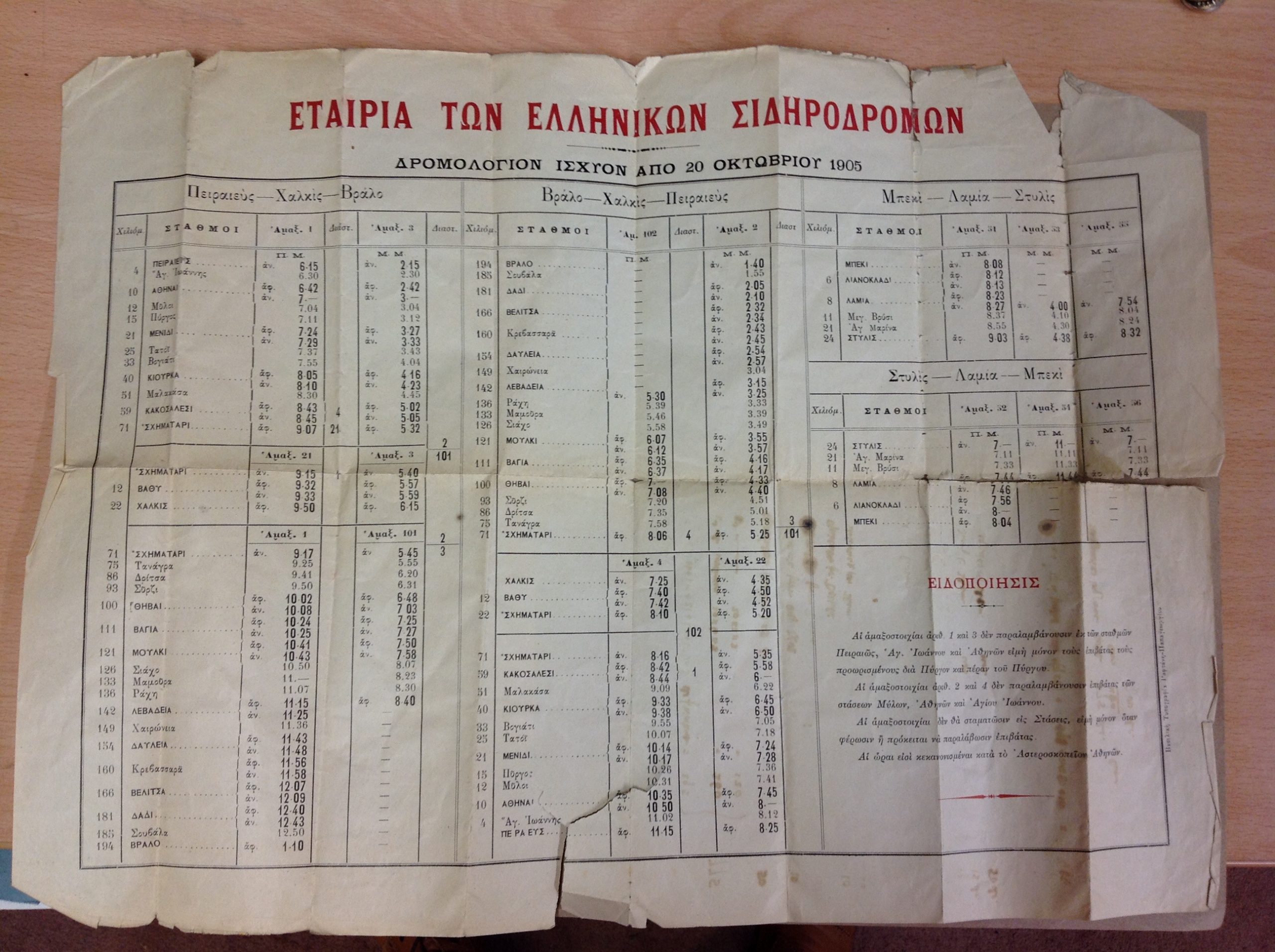
On the blank reverse side of this timetable are handwritten estimate accounts for excavations at Rhitsona, most likely added later.
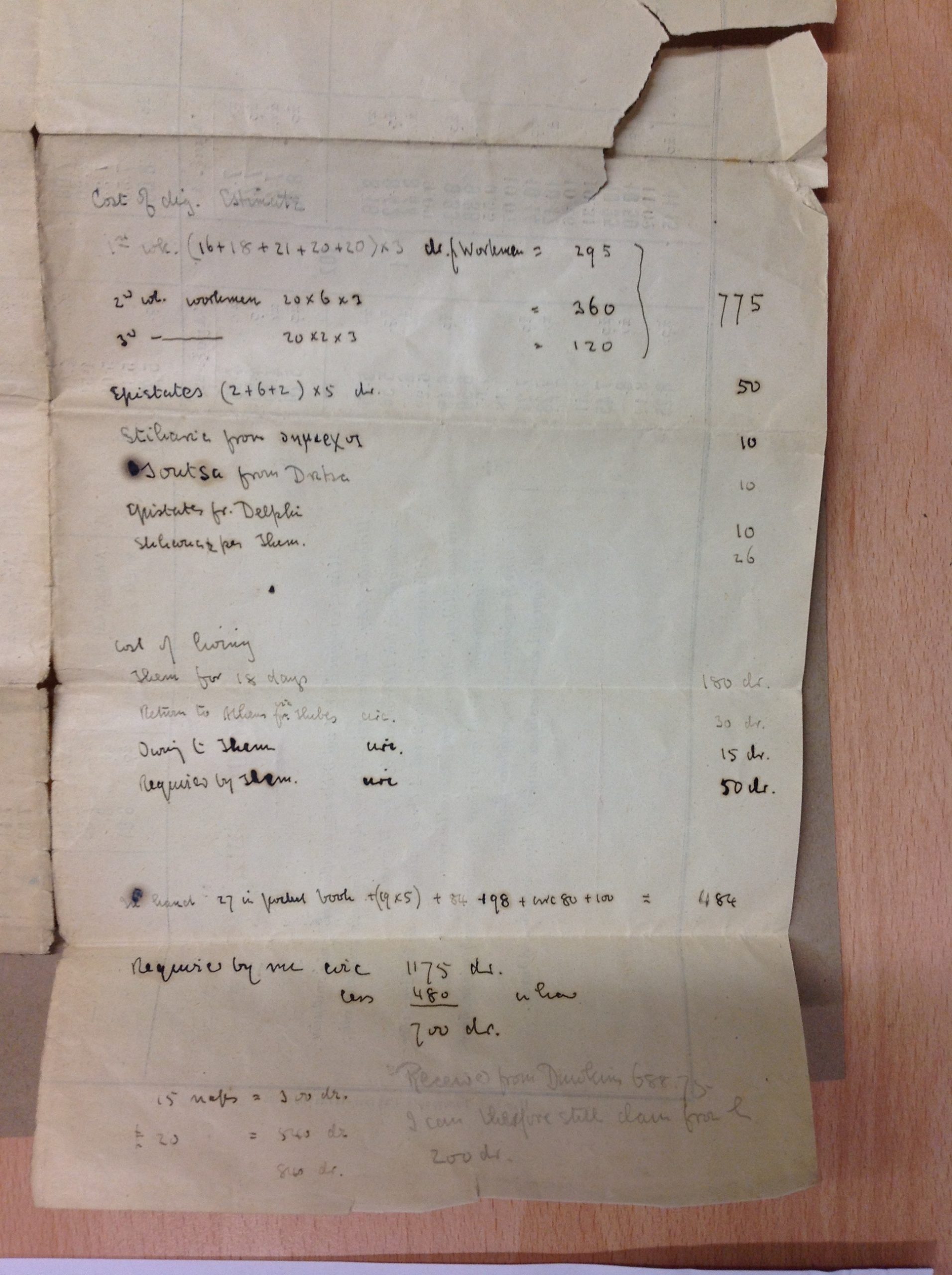
Having had this initial reconnoissance, Burrows returned to Cardiff and obtained funds for excavation from Oxford University’s Craven Fund. The dig began in August 1907. The British School at Athens supported Burrows in his research – its director Richard MacGillivray Dawkins helped secure Burrows his excavation permit. Arriving in Greece, Burrows started work at Dilisi, where he hoped to find further traces of the temple. After an unsuccessful ten-day excavation in which he did not find what he was looking for, he moved locations and settled at Rhitsona. Percy Ure, then a young Cardiff colleague, joined him there.
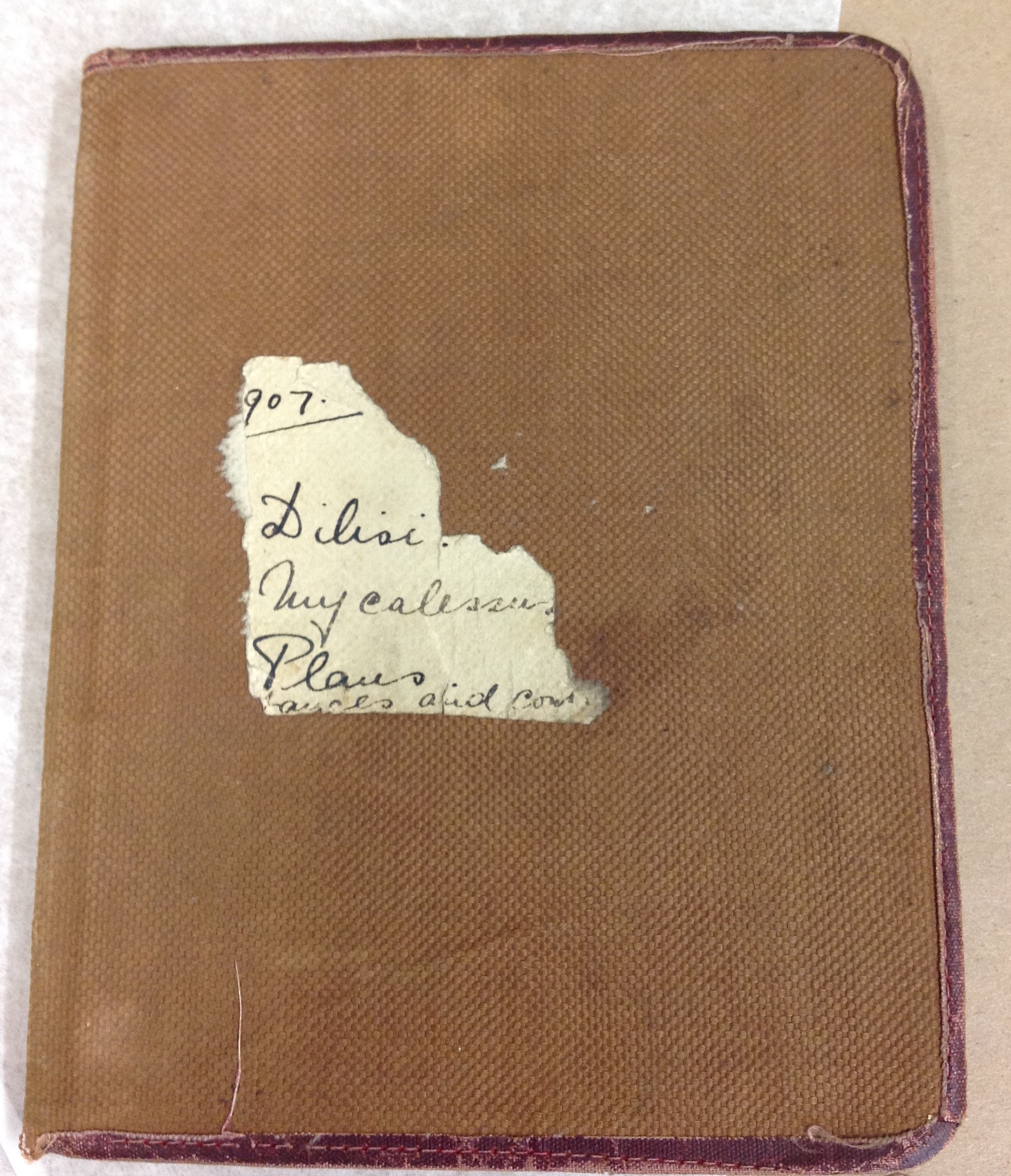
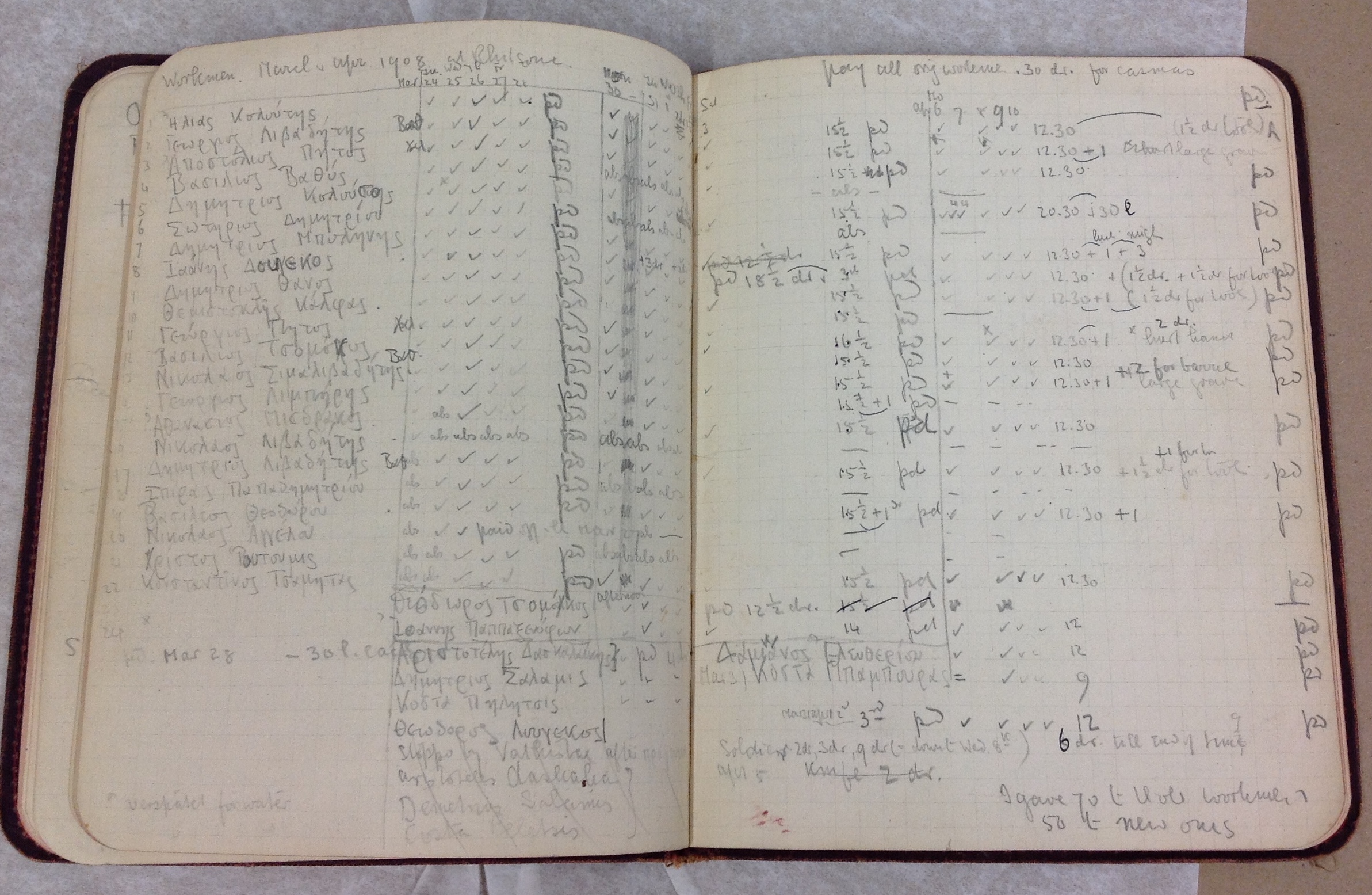
Burrows’ notebook in the Ure Museum archive includes details of the workers he employed to excavate for him. The notebook also reveals that the relations between him and the local workforce did not always go smoothly. In fact they threatened to strike over the rate of pay, and Burrows in turn threatened to seek other workers from a different village that would be more amenable to his terms.
The excavations at Rhitsona continued in the spring of 1908, after a winter hiatus. Also on site with Burrows and Ure was Percy’s friend Maurice Rackham, brother of the famous artist Arthur. Another key member of the team was Grace Holding, a Classics graduate from Cardiff responsible for all the drawing and illustration. She worked with the Swiss archaeological artist Émile Gilliéron, who was a key part of Arthur Evans‘ then-ongoing excavation team at Knossos.
The Ure Museum archive contains letters from Grace Holding during this period. The first letter references her discussions with other women archaeologists who had been students at the British School at Athens, “Miss Hamilton” (Mary Hamilton), and “Miss Hutton” (Caroline Amy Hutton), in preparation for her own imminent trip there.
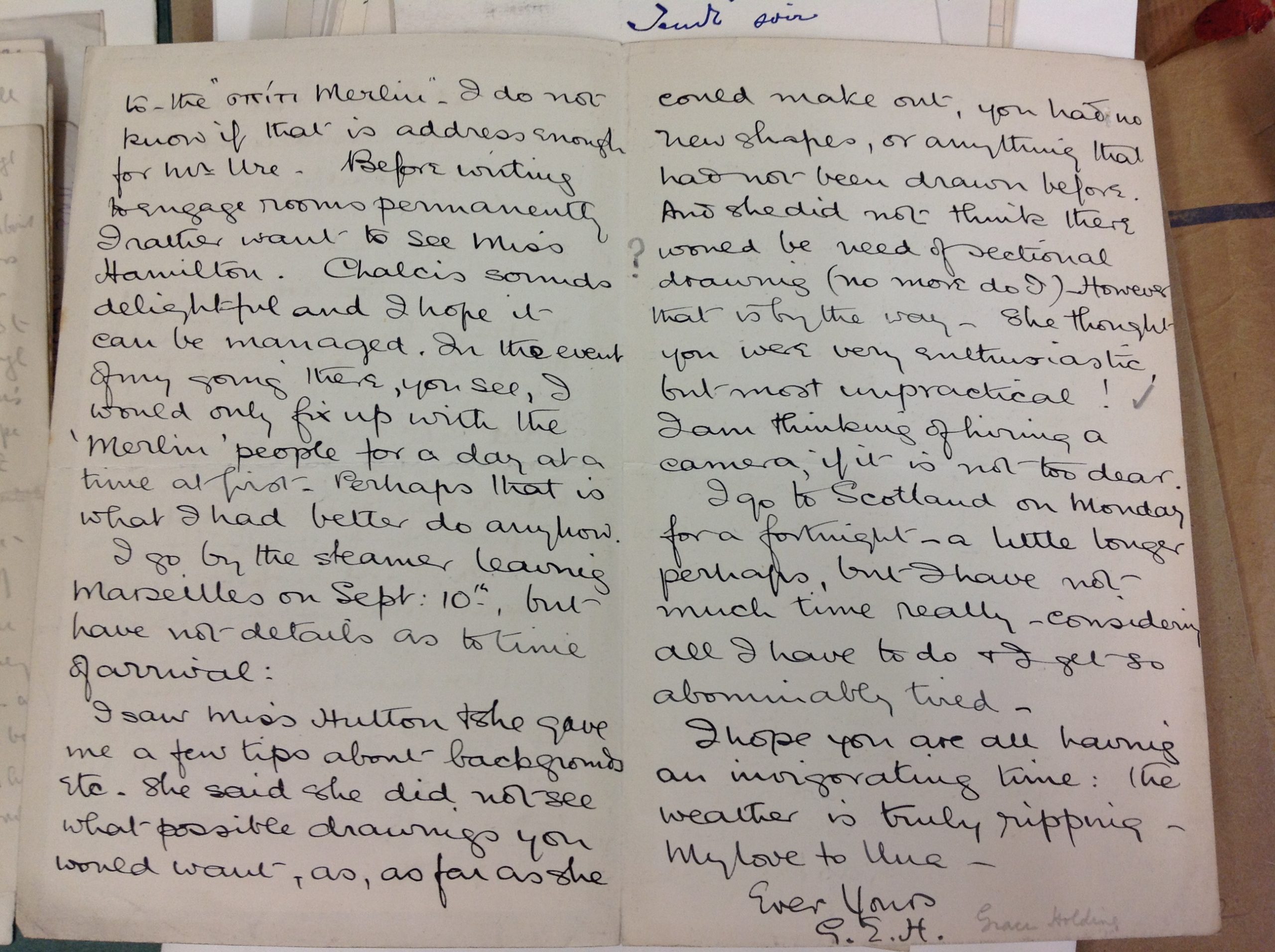
The Mykalessos/Rhitsona excavations were the beginning of Percy Ure’s career as an excavator. But the archive has a broader relevance to other histories, particularly in what it reveals about the working practices of British archaeologists abroad, the agency of locally recruited workers, and the work of women in archaeology. Though the Ure Museum does not hold artefacts from these excavations, the meticulous records, notes and correspondence relating to the site are just as valuable.
References/Further Reading
Burrows, RM & Ure, PN 1907/8. Excavations at Rhitsona in Boeotia. Annual of the British School at Athens 14 (226-318).
Fowler, H. 1905. Archaeological News: Athens – The Archaeological Congress. American Journal of Archaeology 9 (3): 347-351.
Glasgow, G. 1924. Ronald Burrows: a memoir. London: Nisbet & Company.
Sabatai, V. 2006. Ronald M. Burrows and Percy N. Ure in Boeotia. The Ure Museum: a Retrospective.
For more on “Merlin House”, mentioned in Grace Holding’s letter, see Natalia Vogiekoff-Brogen’s 2016 blog post “The Man from Damascus, The Good Wife, and the Baby Solon“

